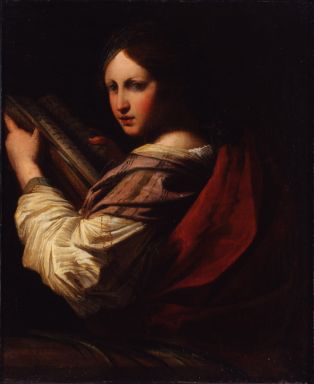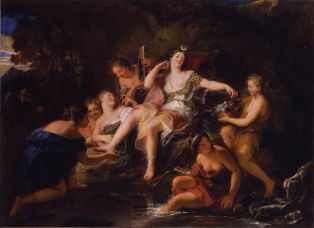- Découvrez les collections
- Notice d'oeuvre



Paris, 1688 ; Paris, 1737
H. 58,2 cm ; l. 47,5 cm (sans cadre)
M0536_L.I.7
Cette toile est caractéristique de la manière de Lemoyne, bien qu’elle fut un temps attribuée à François Boucher. S’il est vrai que les coloris de la chair et l’aspect sensuel du modèle peuvent faire penser à ce dernier, la forme du visage et la touche renvoient au style de Lemoyne. Ce profil est d’ailleurs très proche de celui de la Vierge représentée dans l’Annonciation peinte par Lemoyne en 1727, tableau conservé au Winchester College (Grande-Bretagne) et dont les princes de Salm, propriétaires de la Tête de jeune femme, possédaient une gravure. Lemoyne est reçu en 1718 à l’Académie royale de peinture et de sculpture. Vers 1725, il effectue un voyage en Italie, où il est influencé par les œuvres de Michel-Ange et Pierre de Cortone. Il répond à de nombreuses commandes à Paris, notamment pour la décoration de l’église des Jacobins, le château de Versailles, l’église Saint-Sulpice. Professeur à l’Académie à partir de 1733, il participe à la décoration du Salon d’Hercule à Versailles, ce qui lui vaut d’être nommé premier peintre du roi.
This painting is typical of Lemoyne’s style, despite the fact that it was attributed to François Boucher for a time. Although the flesh tones and sensuality of the model are reminiscent of Boucher, the shape of the face and the brushwork point clearly to Lemoyne’s style. The profile is moreover very similar to the Virgin depicted in the Annunciation painted by Lemoyne in 1727, housed at Winchester College (United Kingdom), an etching of which was owned by the Princes of Salm, to whom this Head of a Young Woman also belonged. Lemoyne was admitted to the Royal Academy of Painting and Sculpture in 1718. Circa 1725, he travelled to Italy, where he was influenced by the works of Michelangelo and Pietro da Cortona. He carried out a large number of commissions in Paris, notably to decorate the église des Jacobins and église Saint-Sulpice churches, and the palace of Versailles. He was appointed a professor at the Academy in 1733, and worked on the decoration of the Salon d’Hercule at Versailles, earning himself the distinction of Painter to the King.



 Copyright© WebMuseo 2017 - 2024
Copyright© WebMuseo 2017 - 2024